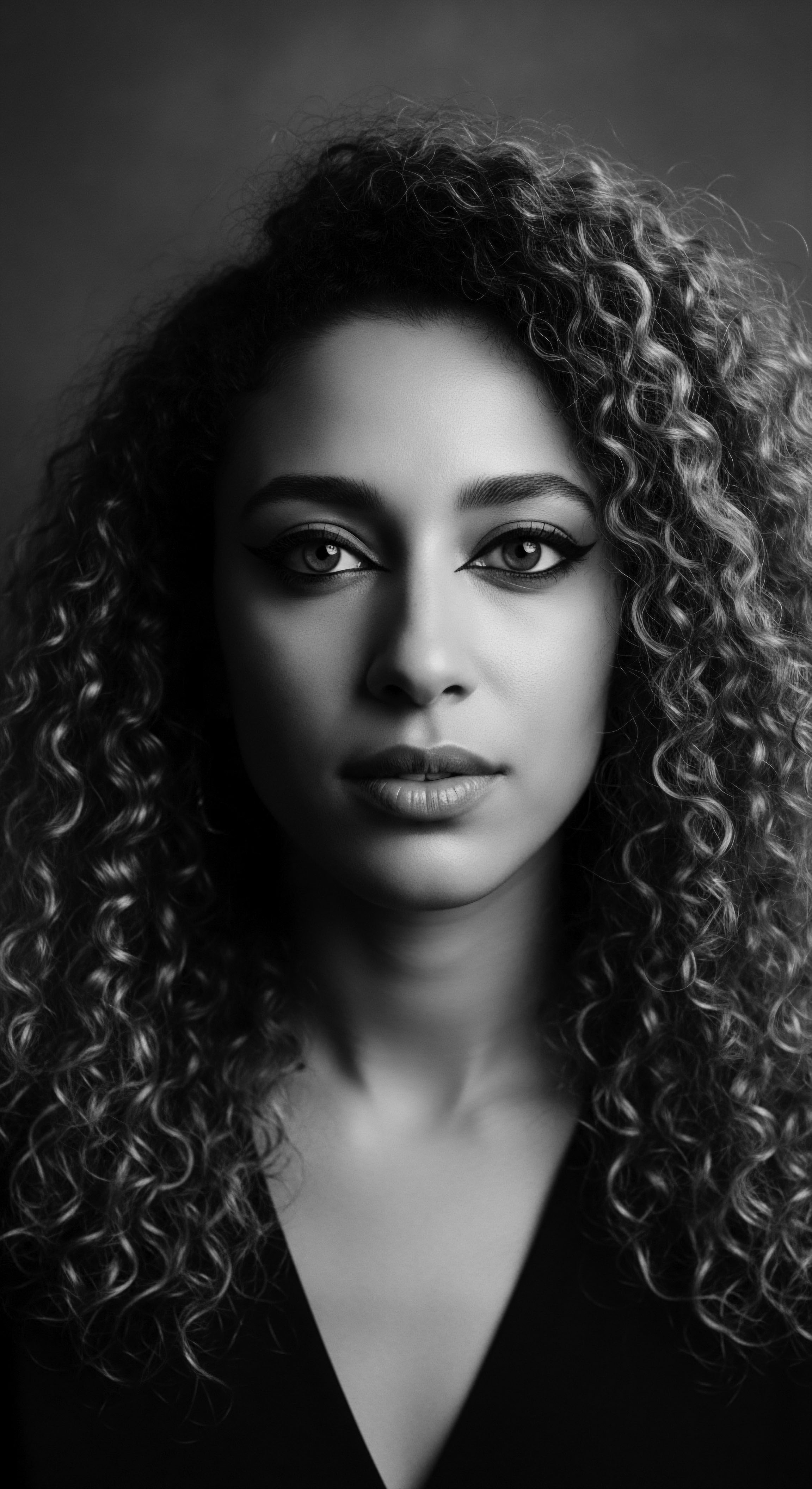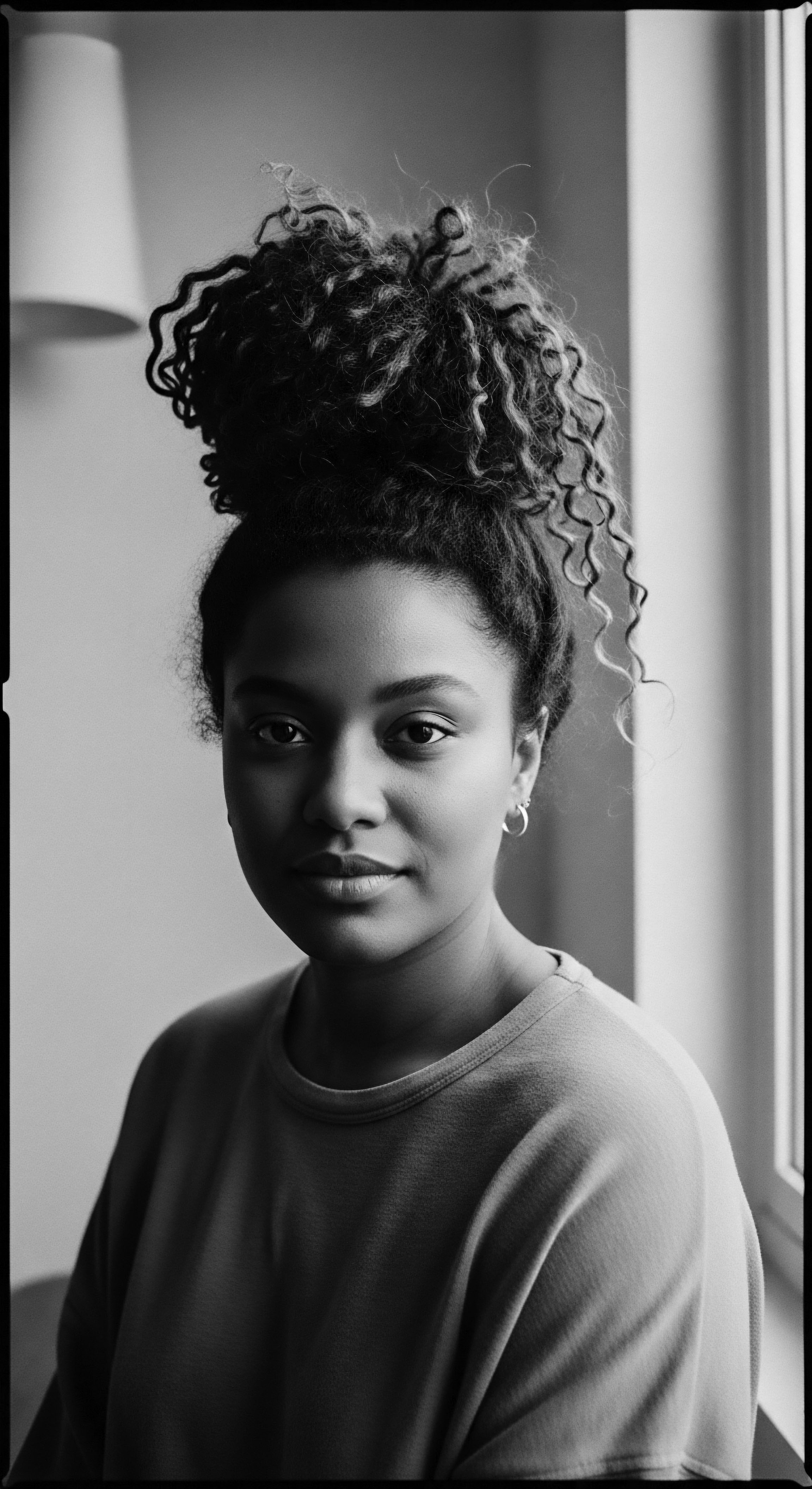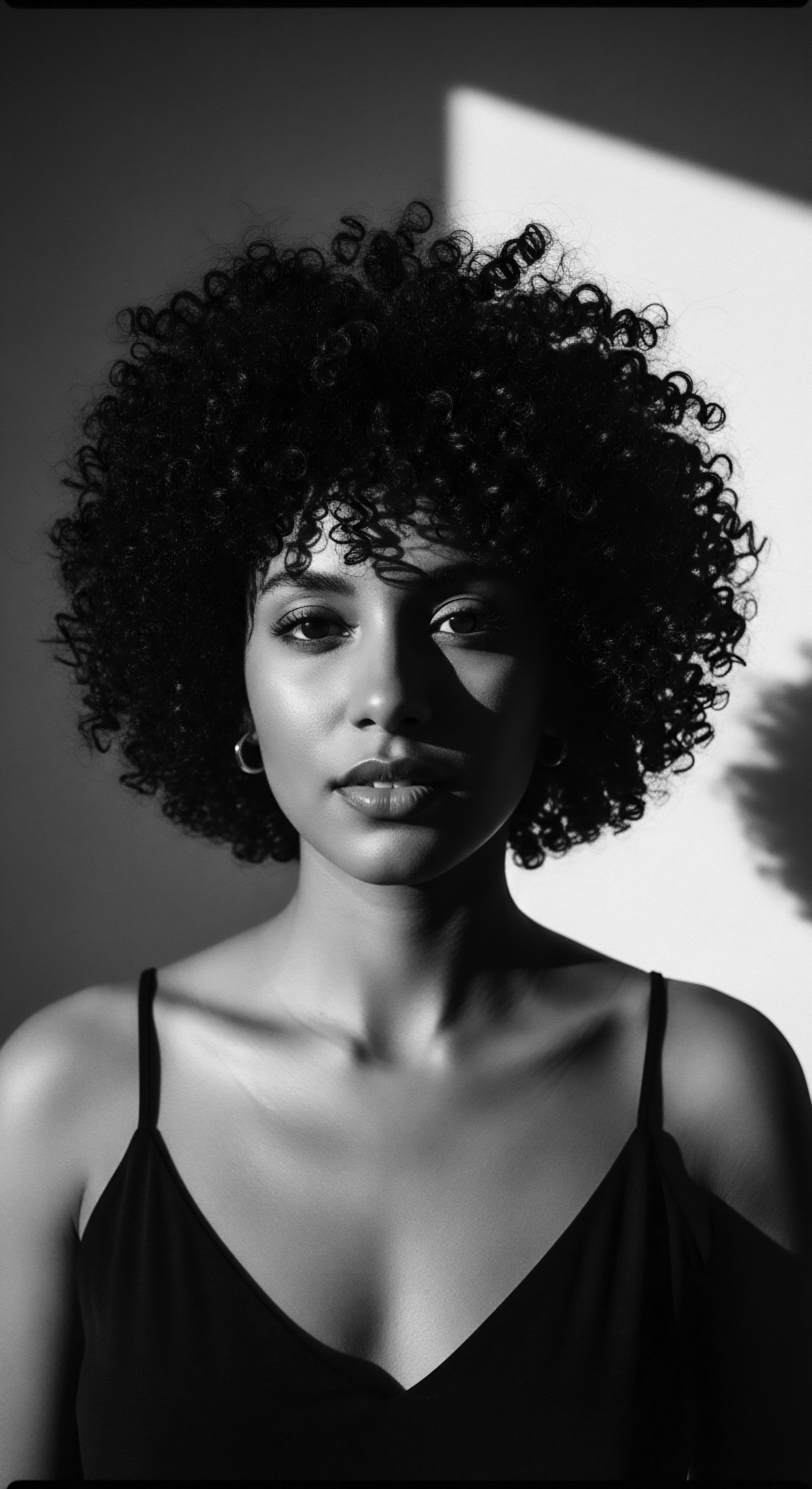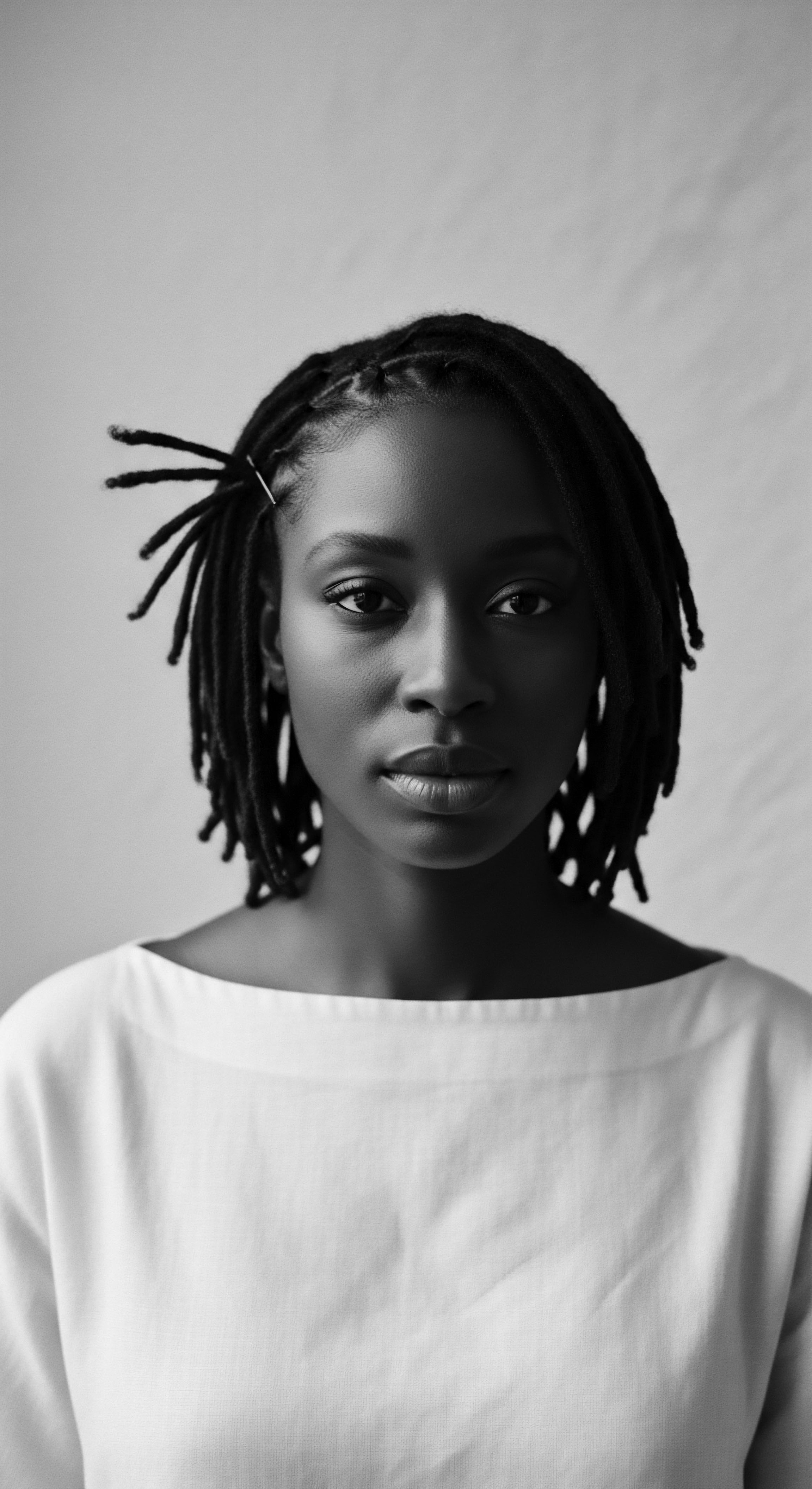
Roots
To truly understand the enduring heritage found within Earth-based hair treatments, one must first look at the very strands themselves, particularly those of us graced with the intricate spirals and resilient coils that define textured hair. Our hair, a profound extension of self, carries within its very structure the whispers of ancient soils and timeless care. It is a biological marvel, certainly, yet its history is written not only in protein bonds but in the hands that nourished it through millennia. These Earth-based treatments are not mere cosmetic applications; they represent a continuous lineage of wisdom, passed down through generations, recognizing hair as a vital, sentient part of our being, connected intimately to the planet that sustains us.

What Does Textured Hair Reveal About Its Ancestral Structure?
The anatomy of textured hair speaks volumes about its origins and the ingenuity of early human care practices. Unlike straighter hair types, the hair shaft of coiled and kinky textures exhibits an elliptical, rather than round, cross-section. This unique shape, coupled with an uneven distribution of keratin and a tendency for the cuticle scales to lift more readily, contributes to its singular beauty and strength, alongside its propensity for dryness.
Ancestral knowledge, long before microscopes revealed these truths, intuited this need for intense moisture and protection. The very coil pattern, a natural spring, requires gentle handling, a lesson learned and honored through generations of Earth-based treatments.
Earth-based hair treatments are not just about beauty; they are about honoring the profound connection between our textured strands and the enduring wisdom of ancestral lands.
Consider the hair follicle itself, a tiny organ anchoring each strand to the scalp. In textured hair, these follicles often emerge at a more acute angle from the scalp, leading to the characteristic curl pattern. This anatomical reality meant that ingredients needed to soothe the scalp, deliver deep moisture to the root, and travel effectively along the winding path of the hair shaft. Indigenous communities around the globe, particularly those with a prevalence of textured hair, discovered and refined remedies using what their immediate environment provided.
- Shea Butter ❉ From the karite tree, native to West Africa, this rich emollient has been used for centuries to seal moisture into highly porous textured hair, protecting it from environmental stressors and lending a supple quality.
- African Black Soap ❉ A traditional cleanser, often made from plantain skins, cocoa pods, and palm kernel oil, it cleanses the scalp and hair without stripping away vital oils, maintaining the delicate moisture balance essential for textured strands.
- Rhassoul Clay ❉ Sourced from the Atlas Mountains of Morocco, this mineral-rich clay has been traditionally used to detoxify the scalp and hair, drawing out impurities while leaving behind beneficial minerals that contribute to hair health.

How Did Early Cultures Classify and Nurture Hair?
The early understanding of hair, while not framed in modern scientific terms, possessed a profound cultural and practical classification system. In many African societies, hair types were recognized not by arbitrary numerical scales but by their visual characteristics, their response to manipulation, and their significance within social structures. The terms used were often descriptive, rooted in lived experience and observation. Acknowledging the variations, ancestral care practices were developed to meet the specific requirements of these distinct textures.
This was a form of intuitive science, where observation of how certain plants, oils, or clays interacted with specific hair types dictated their continued use. The heritage of these practices is a testament to thousands of years of trial, error, and meticulous refinement, all designed to support the natural inclinations of coiled and kinky hair.
| Traditional Source Hibiscus (Flor de Jamaica) |
| Region of Origin West Africa, Asia, Latin America |
| Primary Hair Benefit Scalp cleansing, hair conditioning, natural color enhancement. |
| Traditional Source Chebe Powder |
| Region of Origin Chad |
| Primary Hair Benefit Reduces breakage, promotes length retention by strengthening strands. |
| Traditional Source Amla (Indian Gooseberry) |
| Region of Origin India |
| Primary Hair Benefit Hair conditioning, scalp health, thought to slow premature graying. |
| Traditional Source Coconut Oil |
| Region of Origin Tropical Regions (Africa, Asia, Pacific) |
| Primary Hair Benefit Deep conditioning, protein retention, adds shine. |
| Traditional Source These Earth-based ingredients form a cornerstone of textured hair heritage worldwide. |

Ritual
The enduring heritage of Earth-based hair treatments is perhaps most vividly experienced in the art and science of textured hair styling. These are not merely aesthetic choices; they are a living archive of techniques, tools, and transformations, each steeped in cultural meaning and ancestral wisdom. Our ancestors understood that styling was a fundamental aspect of hair care, often inextricably linked with the treatments themselves.
The applications of rich clays, nourishing oils, or botanical infusions were often the first step, preparing the hair and scalp for the intricate braiding, twisting, or coiling that followed. These rituals were communal, intergenerational, and deeply expressive, communicating identity, status, age, and spiritual connection.

How Do Protective Styles Carry Ancestral Roots?
Protective styles, a cornerstone of textured hair care today, are direct descendants of ancient practices, many of which incorporated Earth-based treatments for enhanced benefits. Styles like braids, cornrows, and twists were not only artistic expressions but also served a practical purpose ❉ shielding fragile ends from environmental damage and reducing manipulation, thereby promoting length retention. In many African societies, before the colonial period, these intricate hairstyles could signify marital status, tribal affiliation, or even age group.
Before the hair was braided, it was often treated with plant-derived oils or butters, sometimes infused with herbs, creating a potent concoction that conditioned the hair and scalp while it was protected. The very act of applying these treatments was part of the ritual, a moment of connection between the individual and their heritage.
The historical use of protective styles with Earth-based treatments speaks to a deep ancestral understanding of textured hair’s unique needs.
The process of styling itself was a tender thread, often shared between women, a time for storytelling, teaching, and bonding. Children would learn the rhythm and care of braiding from their mothers and grandmothers, experiencing firsthand the soothing touch of plant-infused oils as they were worked into the scalp. These sessions transmitted not only technical skill but also the cultural significance of each style, the stories behind the ingredients, and the reverence for hair as a crown. Consider the meticulous preparation of hair for traditional West African thread wraps, where the hair would be softened with warm shea butter or specific plant-based conditioners, making it pliable and resilient for the wrapping process.

What Traditional Tools Were Used with Earth-Based Treatments?
The tools used in ancestral hair care, often simple yet profoundly effective, were extensions of the Earth itself. These were not mass-produced plastic combs but implements crafted from wood, bone, or natural fibers, reflecting a symbiotic relationship with the environment. Wooden combs, for instance, were often made from trees revered for their strength or spiritual properties.
Their smooth teeth would gently detangle hair, distributing the natural oils and applied treatments evenly, minimizing breakage. The use of gourds as vessels for mixing clays or herbal rinses, or flat stones for grinding powders, underscores the direct connection to the Earth’s bounty.
These tools, combined with the power of Earth-based treatments, allowed for sophisticated manipulation of textured hair. For instance, the use of certain plant extracts to create a stiffening agent for elaborate coiffures, or sticky resins to aid in the formation of dreadlocks, speaks to an advanced understanding of natural chemistry. The heritage of these tools and techniques reminds us that our ancestors were ingenious scientists and artists, working with the materials at hand to perfect their craft. The legacy is seen today in the continuing preference for natural materials in hair tools, a subtle nod to the wisdom of generations past.
- Wooden Combs ❉ Crafted from local hardwoods, these combs were favored for their ability to gently detangle textured strands without creating static, aiding in the smooth distribution of conditioning oils.
- Gourds and Pottery Bowls ❉ Used for mixing and storing Earth-based ingredients, these natural vessels ensured the integrity of botanical preparations and reflected a sustainable approach to hair care.
- Natural Fibers and Leaves ❉ Employed for hair ties, wraps, or even as applicators for pastes and poultices, these materials were chosen for their flexibility, strength, and biodegradability.

Relay
The enduring heritage of Earth-based hair treatments finds its most tangible expression in the regimens of radiance passed down through generations. These are not isolated practices but components of a holistic approach to wellbeing, where the care of textured hair is intertwined with ancestral wisdom about nutrition, community, and spiritual connection. The knowledge of which plant, which clay, or which oil to use, and how to prepare it, has been relayed across time, adapting to new environments while holding fast to core principles of nurturing and protection. This legacy speaks to a deep, integrated understanding of the human body and its relationship to the natural world.

How Does Ancestral Wisdom Shape Modern Hair Regimens?
The personalized textured hair regimens we champion today draw heavily from ancestral wisdom, often unknowingly. The concept of “listening to your hair”—understanding its needs based on climate, activity, and internal health—is not a modern invention. Ancient cultures practiced this attunement, observing how different seasons or stages of life affected hair, and adjusting their Earth-based treatments accordingly. For instance, communities in arid regions might have relied more heavily on rich butters and thick oils for moisture retention, while those in humid areas might have favored lighter herbal rinses for scalp balance.
A compelling example of this enduring wisdom comes from the practices of the Basara Arab women in Chad. Their use of Chebe Powder, a blend of primarily Croton gratissimus, along with other indigenous plants, has been meticulously documented by natural hair enthusiasts. The powder is mixed into a paste with oils and applied to the hair, then braided, never reaching the scalp. This specific application, repeated over time, has been observed to significantly reduce breakage, thereby allowing textured hair to retain more length.
While modern science works to decode the exact mechanisms – perhaps strengthening the hair shaft or creating a protective barrier – the practice itself is a living testament to generations of empirical observation and effective application within a specific cultural context. (Harris, 2020) This practice, passed down through matriarchal lines, shows how a dedicated, consistent regimen, rooted in local flora, contributes directly to hair resilience and growth for highly coiled textures.

What Role Do Nighttime Rituals Play in Heritage Care?
The nighttime sanctuary, a space for replenishing and protecting textured hair, is a practice deeply rooted in ancestral heritage. Before the advent of silk or satin bonnets, headwraps crafted from natural fibers served a similar purpose ❉ protecting hair from friction against rough sleeping surfaces, preserving moisture, and maintaining hairstyles for longer durations. This simple yet profound practice acknowledges the vulnerability of textured hair, particularly during sleep when natural oils can be absorbed by cotton pillows, leading to dryness and breakage.
The act of wrapping or covering one’s hair at night was not only practical; it was a ritual of self-preservation and reverence. It ensured that the day’s Earth-based treatments—the nourishing oils, the conditioning herbal rinses—were allowed to continue their work undisturbed, sealing in moisture and promoting hair health.
| Historical Practice Using natural fiber headwraps for sleep |
| Purpose in Heritage Preserving moisture, preventing tangles, maintaining styles. |
| Modern Parallel/Link to Earth-Based Treatments Silk/satin bonnets and scarves; continued emphasis on protecting hair treated with natural oils and butters. |
| Historical Practice Applying plant-based oils before braiding |
| Purpose in Heritage Lubricating hair for manipulation, reducing friction, conditioning. |
| Modern Parallel/Link to Earth-Based Treatments Pre-poo treatments with botanical oils; leave-in conditioners based on traditional plant extracts. |
| Historical Practice Scalp massaging with herbal infusions |
| Purpose in Heritage Stimulating growth, soothing irritation, traditional medicinal use. |
| Modern Parallel/Link to Earth-Based Treatments Scalp serums with essential oils; massage tools designed to distribute natural conditioners effectively. |
| Historical Practice The fundamental principles of protective care remain consistent, connecting ancient wisdom to contemporary practices. |
The selection of ingredients for textured hair needs, even in contemporary times, often harks back to these ancestral remedies. We see a resurgence of interest in Coconut Oil, Avocado Oil, and various botanical extracts that have been used for centuries across different cultures with textured hair. These Earth-based solutions address common challenges like dryness, breakage, and scalp irritation, providing a gentle yet effective alternative to synthetic compounds. The heritage of problem-solving for textured hair is therefore a testament to the effectiveness of these natural remedies, honed through generations of careful observation and practice.
The holistic influences on hair health, deeply embedded in ancestral wellness philosophies, also persist. Our hair’s vitality is seen as a reflection of overall well-being, impacted by diet, stress, and even spiritual harmony. This integrated view means that Earth-based hair treatments were often part of a broader wellness regimen, incorporating nutritional plants, mindfulness practices, and communal support. The enduring legacy here is that true hair health extends beyond topical applications; it is a reflection of a life lived in balance, a concept championed by our ancestors and increasingly recognized by contemporary wellness advocates.
Ancestral knowledge of Earth-based treatments offers a profound framework for understanding and resolving textured hair challenges.

Reflection
The journey through the enduring heritage found in Earth-based hair treatments, particularly as it relates to textured hair, reveals a profound story. It is a story not of simple ingredients but of a continuous conversation between humanity and the Earth, mediated by the unique needs of coiled strands and a profound reverence for ancestral wisdom. Our hair, in its myriad textures, acts as a living scroll, holding generations of care rituals, cultural identities, and scientific observations, all recorded in the language of plants, clays, and oils. This legacy is not static; it is a vibrant, breathing archive that continues to adapt, inform, and empower.
The whispers of ancient hands mixing botanical pastes in earthenware bowls still resonate in the choices we make for our hair today, linking us to a collective memory of resilience and beauty. This is the enduring soul of a strand, rooted in Earth, reaching for the future.

References
- Harris, Angela. “Textured Hair, Traditional Practices, and Community ❉ An Exploration of Chebe Powder Use in the Chad Basin.” Journal of African Cultural Studies, 2020.
- Byrd, Ayana D. and Lori L. Tharps. Hair Story ❉ Untangling the Roots of Black Hair in America. St. Martin’s Press, 2001.
- Akerele, Olayinka. The African Traditional Hair Care Manual. Lagos, Nigeria, 2017.
- Palmer, Gwendolyn. African-American Hair ❉ A Historical and Cultural Perspective. Nova Science Publishers, 2008.
- Walker, A’Lelia Bundles. On Her Own Ground ❉ The Life and Times of Madam C.J. Walker. Washington Square Press, 2001.
- Hunter, Lea. “The Chemistry of Hair Care ❉ Traditional and Modern Approaches.” International Journal of Cosmetic Science, 2019.
- Sweet, Laura. “Indigenous Plant-Based Cosmetics and Their Cultural Significance.” Ethnobotany Research & Applications, 2022.
- Mazama, Ama. “Hair Matters ❉ Beauty, Power, and the Politics of Dreadlocks.” NYU Press, 2009.
